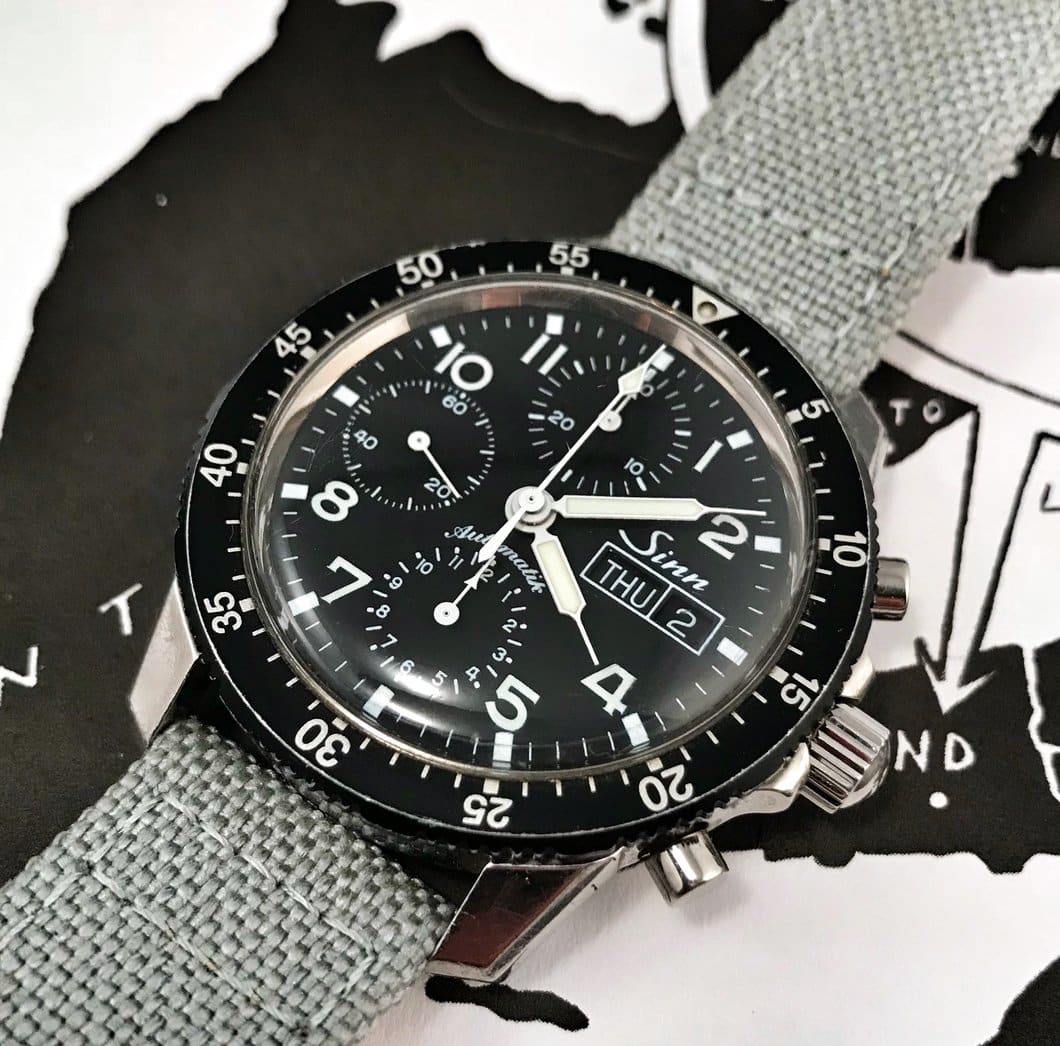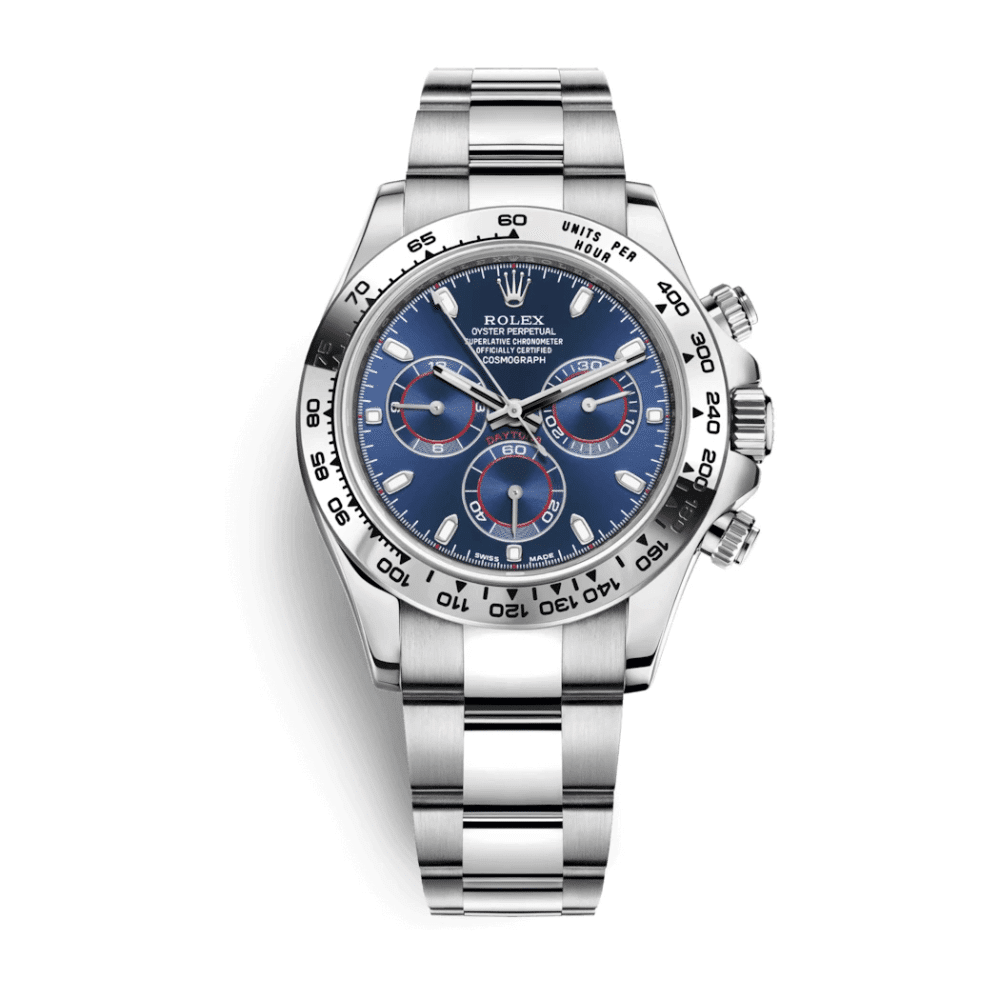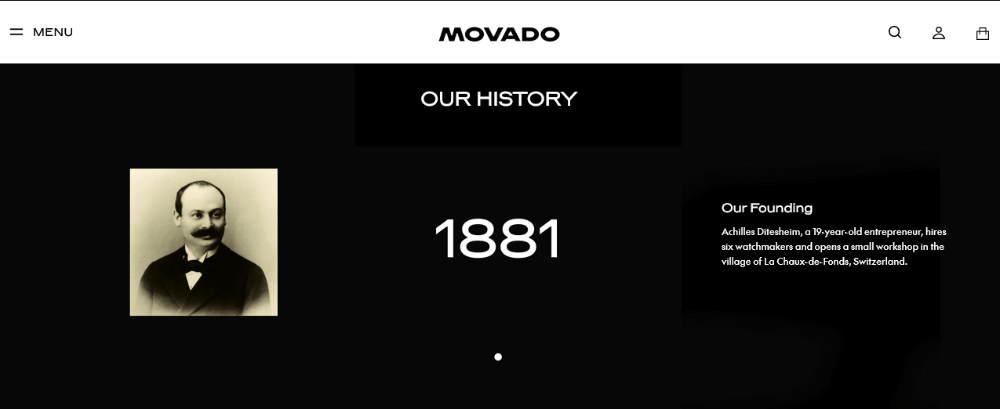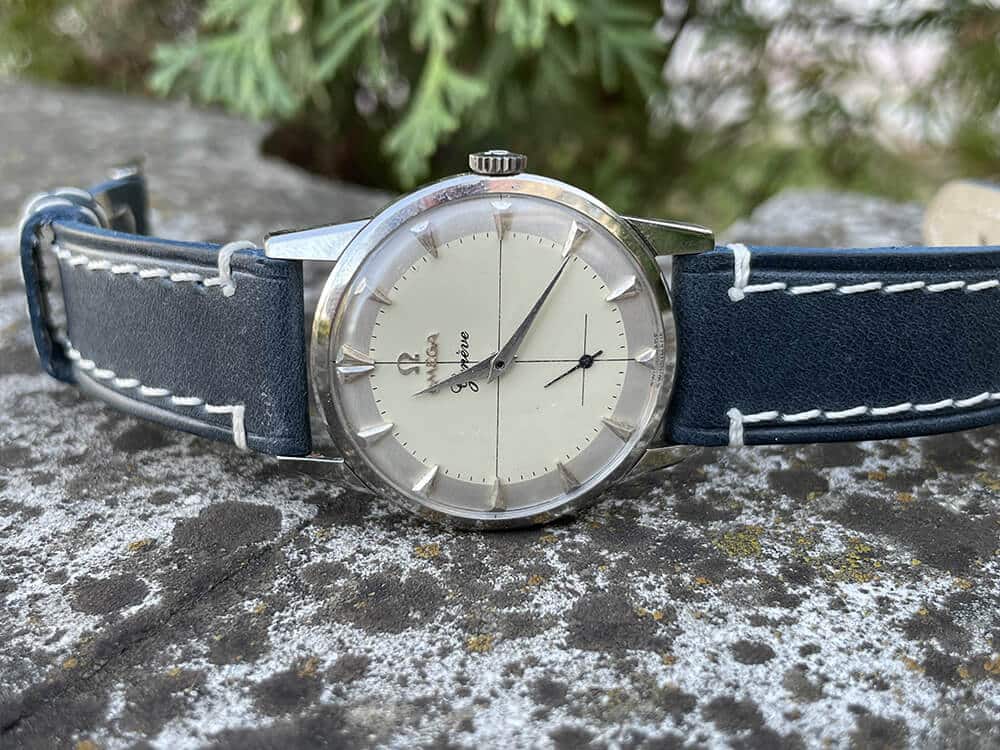1970 was a year of great ups and downs for the mechanical chronograph.
The vaunted Omega Speedmaster helped bring the crippled Apollo 13 space
capsule back to Earth. James Bond’s Rolex Cosmograph helped 007 foil
Blofeld on a mountaintop lair in On Her Majesty’s Secret Service. And it
had been only a year since the great riddle of making a self-winding
chronograph was solved, with several companies crossing the finish line
in what was horology’s version of an arms race. Fresh off of this
triumph, the market was awash in great chronographs, like the Zenith El
Primero, the Heuer Monaco and the Breitling Chrono-matic, all still icons
to this day. But what should have been the dawn of a decade of glory for
these automatic timepieces was prematurely overshadowed by a new, even
more revolutionary invention: the quartz movement.
Within a couple of years, no one cared if his chronograph was self-
winding. Quartz watches were all the rage – light, durable, infinitely
more accurate and growing cheaper by the year. They were the future while
mechanical watches were century-old relics – heavy, complicated and
expensive. In perhaps the most telling indication of the mechanical
watch’s demise, even James Bond switched from his reliable Rolex to a
digital Seiko for 1977’s “The Spy Who Loved Me.”
It was during this dark period of the early Seventies that a humble watch
movement was developed that may have saved the mechanical chronograph
from the dustbin of history and is still being made to this day, found in
countless watches from humble entry level watches to expensive perpetual
calendar masterpieces. That movement is the ETA 7750 or, as it was
formerly and still more commonly known, the Valjoux 7750. It is a
movement that inspires heated debate among watch connoisseurs, equally
revered and laughed at. But no one can deny the impact this movement has
had on the watch industry.
Most of the chronographs of the 1960s used a delightful little mechanism
called a column wheel to start, stop and reset the stopwatch functions.
Renowned for its precision and snappy response, the column wheel took
skill to produce and was seen as a high achievement for a watchmaker. But
it didn’t lend itself well to mass production or low cost and was an easy
target for the cheap hordes of quartz watches coming out of Japan. The
mechanical chronograph languished.
In 1973, inspired by the automatics of Zenith, Heuer, et al., the Vallee
de Joux movement maker, Ebauches SA, adapted one of their old hand-
cranked chrono movements and released the Valjoux 7750 to little fanfare.
The movement was not as refined as the Zenith or Calibre 11 but its
relative crudeness is made up for by its robustness. The 7750 is a
coulisse-lever escapement, meaning that the stopwatch functions are
driven by levers that push an oblong cam back and forth, alternately
starting, stopping and resetting the chronograph. The architecture of the
7750 lent itself to easier mass production than did column wheel calibres
but by the mid-70s, quartz was king and there wasn’t the call for a high
volume of mechanical chronographs and the movement lay largely dormant.
By the mid-80s, the Swiss watch industry was showing signs of life thanks
in large part to the cheap quartz Swatches that were all the rage. Many
companies survived the “quartz crisis” by consolidating and sharing
resources. Ebauches SA, now know as ETA, was absorbed by the Swatch Group
and cranked out movements for any number of watch companies. While quartz
was still on top, a renewed interest in mechanical movements led to a
renaissance of automatic watches. Proud old names of watchmaking were
resuscitated – Omega, IWC, Longines – and started selling old technology
to a new generation. It was finally time for the Valjoux 7750 to have its
moment in the sun.
People who know watches can usually tell a Valjoux 7750-powered watch
just by holding it
With the watch industry just back on its feet, in-house production of
column-wheel chronographs was not practical – they required considerable
design and manufacturing resources and were expensive to make and to
sell. The Valjoux 7750 was the perfect answer and the movement found its
way into countless mechanical chronographs from everyone from Tissot to
Sinn to TAG Heuer to Omega.
People who know watches can usually tell a Valjoux 7750-powered watch
just by holding it. It is characterized by its rather stiff pusher
action, sometimes by a slight backlash of the seconds hand as the
chronograph engages and by the familiar “wobble” of the winding rotor
when it spins inside the case. These traits annoy some and are endearing
to others. The movement is not only simple and rugged but it is also
highly flexible. While the most common iteration is a three subdial (12-
6-9) layout, the 7750 could be adapted to display a date, the day and
date, two subdials or three, even a moonphase complication and in various
quality grades, differentiated by level of decoration and adjustment.
Watch companies could order the 7750 however they chose and either drop
it into their case as is, or modify it in-house.
The International Watch Company has long been a brand that has used the
Valjoux 7750 to great advantage and with great creativity. And while the
company now has its own in-house chronograph calibre, the 7750 can still
be found in its pilot and dive chronographs. In the early 2000s, IWC took
the movement to new heights, with its Pilot “Doppelchronograph” (double
chrono) and Split Minute Aquatimer, which were heavily modified by the
Schaffhausen watchmakers. But it was their GST Perpetual Calendar
Chronograph that really saw a Valjoux 7750 taken to the limits of its
potential. The GST was a groundbreaking piece because it was a true
titanium sports chronograph with the added complication of a perpetual
calendar. No longer was this complication solely confined to gold dress
watches. This was one you could wear 24/7 /365, thanks largely to the
robustness and versatility of its base movement, the Valjoux 7750.
Nowadays, walk into any watch dealer looking for a mechanical chronograph
and the majority of timepieces you’ll see have a Valjoux 7750 ticking
inside, no matter what the watch company has renamed it. This ubiquity
has led to a sort of snobbery among watch geeks who tend to prefer in-
house column-wheel movements. But like the venerable Mercedes 280 Diesels
that have done time as Third World taxis and limousines alike, the
Valjoux 7750 cannot be dismissed as a second-rate movement. It is the
motor that revived the mechanical chronograph for a new generation and
has powered countless fantastic timepieces. Now, with the Swatch Group
threatening to cut off supply of ETA movements to companies outside its
domain, it remains to be seen what the future of the 7750, and the
mechanical chronograph, holds.






